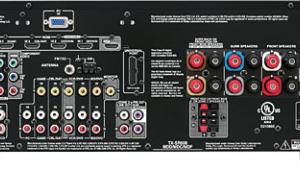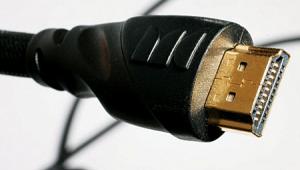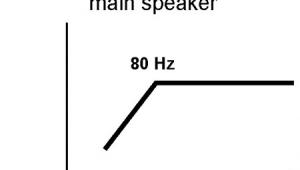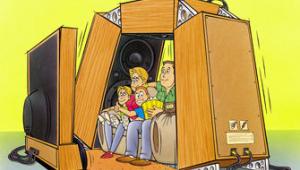Get Plugged In Page 2
 RGB: From the PC to Your TV
RGB: From the PC to Your TV RGB inputs come in a few different flavors. As the name suggests, the red, green, and blue signals are split into three separate channels, with picture information included in each. A very robust connection, RGB can support a video signal of virtually any resolution. RGB can also be found in three-, four-, and five-wire connections. Again, all wires should be 75-ohm coaxial cable. Depending on the number of wires, the picture's horizontal- and vertical-sync signals are either piggybacked on the green cable, offered as a single separate cable, or on two separate cables. Multiwire RGB connectors are mostly found on video projectors and video processors, although some HDTV tuners and displays use these signals.
 A Word About Connectors
A Word About Connectors
RGB and component (Y/Pb/Pr) cables are often terminated with a D-Sub 15-pin VGA-type plug, which is also used for PC cables. This connector uses a single shell that houses three rows of five pins. Several of the pins carry the signal, and this connector can easily be broken into three or five separate wires with RCA-type plugs or locking BNC connectors. All you need is a breakout cable that has the D-Sub 15-pin connection on one end and the separate cables on the other. The RCA, or phono, connector is the most common audio and video cable termination. It consists of a center pin with an outer shield and pushes easily onto the component's jack. The BNC connector, on the other hand, is used on professional equipment. It offers a more-accurate impedance match and a more-secure lock. The connector still has a center pin with an outer shield, but the pin is smaller than that of a phono connector and the shield twists and locks onto the component's jack. RCA and BNC connectors can be used on any coaxial audio or video cable.
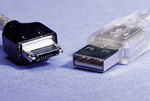 USB: Video from a PC
USB: Video from a PC
While it's far less common than RGB as a way to send a video signal to a display, a number of multimedia monitors have a USB port, which sends a digital signal to the display. While virtually no mainstream consumer electronics devices support USB, there are a number of PC add-ons that can send video to a home theater display. There are already a handful of progressive-scan DVD drives for the PC, plus a number of analog and digital TV tuners. With the right video card, you can also configure a PC to work as a scaler. A downside is that USB is fairly slow, barely fast enough to send standard-resolution (480i) MPEG-2 video. A faster version called USB 2.0 is now available; however, so far, few computer companies have moved to adopt it, as it's no faster than FireWire.
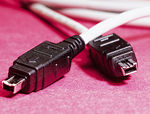 FireWire: The Next Big Thing
FireWire: The Next Big Thing
Apple developed FireWire, also known as IEEE 1394 or iLink, about a decade ago as a high-speed digital data transport. Much faster than USB, FireWire has become the de facto standard for transferring digital audio and video—at least in theory. Because of copying concerns, only a small number of FireWire devices have emerged in the marketplace. Right now, FireWire is mostly used by digital camcorders to transfer digital video to PCs for editing or to connect hard drives, CD-RW drives, or DVD-R drives to computers.
As a copy-protection deal has now been completed, a number of companies are planning digital products with FireWire ports for next year. In addition to sending audio and video information, this digital connection allows devices to talk and send control data to each other, tasks that now require an RS-232 port. With this one port, your progressive-scan DVD player will be able to stream a movie to a display, tell the display the content is 16:9 anamorphic, stream audio to your receiver, and tell that the soundtrack is Dolby EX. A faster version of FireWire is currently in the works.
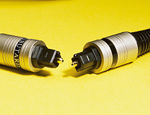 Digital Audio Connectors
Digital Audio Connectors
CDs started the digital audio revolution nearly 20 years ago, but the need to move digital audio streams only came into being at the outset of digital audio recording, with the optical input to the original DAT digital tape decks. When Dolby Digital AC-3 (you know it now as Dolby Digital) was added to laserdiscs' soundtracks, new players had to have what was called an RF output (not to be confused with the aforementioned RG-6 or RG-59 connections) using a standard coaxial cable, usually outfitted with an RCA-type plug. That signal required demodulation and decoding. A handful of modern receivers and pre/pros still have RF ports to support laserdisc players.
In this era of DVD, two types of cable are commonly used to transport a digital audio stream: a Toslink optical cable and a coaxial RCA-type cable. The optical cable uses fiber optics to transport the data in a series of light pulses. The coaxial cable uses similar electrical pulses. Both of these common inputs can be found on most A/V receivers. CD players are more likely to offer optical outputs, whereas DVD players tend to have coaxial if they have just one output, which is generally only the case with entry-level units. Coaxial digital signals use the same 75-ohm cable that composite video uses. Audiophiles argue that the coaxial cable is sonically superior to optical, due to the jitter errors that optical cable can produce. On the other hand, optical cables have no electrical connection and therefore can't introduce ground problems.
 What's Next?
What's Next?
That tangle of wires and cables (or, if you're like me and possess a more-Type-A personality, that neatly conduited cable) may be a thing of the past in a few short years. While there are already wireless options for speakers (which, in my opinion, don't sound that good), there are already a couple of newer wireless protocols that will likely replace most cables within a decade or two. The 802.11 protocol used by Apple in its Airport system currently allows a PC to have a high-speed wireless Internet connection. The current protocol is limited to 11 megabytes per second—fast enough for standard MPEG-2 video but probably too slow for HDTV. Later this year, an update will boost speeds to 22 MB per second, which is fast enough for HDTV, a 6.1 soundtrack, and control information. This newer protocol will be fast enough to support a version of wireless FireWire, now currently in development.
TVs, A/V receivers, speakers, and other components will probably use a less-powerful protocol called Bluetooth. Currently in use for cellular phones, Bluetooth will allow your various devices to talk to each other and trade data. Because of its shorter range and smaller bandwidth, Bluetooth may also be used for speaker-level connections because of its small size and lower consumption.
- Log in or register to post comments
